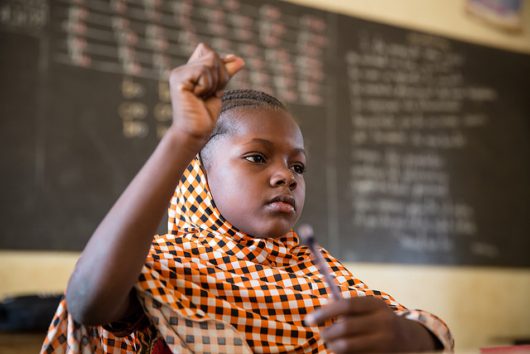Global School Attendance Rates Have Stalled
 As students around the world return to school, there are those who will spend their bitters winters in makeshift shelters. According to the United Nations Children’s Fund (UNESCO), about 123 million or 11.5 percent of school-age children worldwide do not attend school due to wars, conflicts and global poverty. Improvements in global school attendance rates have dropped in recent years. While the number of out-of-school children has declined globally from 99 million to 59 million between 2000 and 2013, progress has largely stalled in the last ten years.
As students around the world return to school, there are those who will spend their bitters winters in makeshift shelters. According to the United Nations Children’s Fund (UNESCO), about 123 million or 11.5 percent of school-age children worldwide do not attend school due to wars, conflicts and global poverty. Improvements in global school attendance rates have dropped in recent years. While the number of out-of-school children has declined globally from 99 million to 59 million between 2000 and 2013, progress has largely stalled in the last ten years.
“The lack of education for displaced children could create a lost generation,” stated Gabriella Waaijman, Regional Director for the Norwegian Refugee Council (NRC), an independent humanitarian organization assisting refugees. Schools, she went on to say, are a secure location for children, helping to build social structures and teaching survival knowledge.
Persistent wars and protracted conflicts, bouts of droughts and other humanitarian emergencies have been responsible for threatening and, in some cases, even reversing the educational gains of the last decade. For example, in the ongoing war in Syria, about 8.4 million Syrian children are in need of urgent humanitarian aid. Nearly two million Syrian children are no longer in school. An even greater number of these children, about 2.5 million, live on the run or as refugees in displacement camps.
The conflicts in Iraq and Syria have resulted in a combined total of 3.4 million missing out on school. With increasing global populations exacerbating the situation, global school attendance rates have dropped even further.
Nowhere is this as salient as in East Africa. Only 65 percent of primary-school-age Burundian and Congolese refugee children are able to go to school. In South Sudan, the country with the highest proportion of out-of-school children (2.2 million), 70 percent of children do not receive an education. Of the one million South Sudanese refugees spilling over into neighboring Uganda, more than half are children. Forty percent of these primary-school-age students are not enrolled in primary school, and 80 percent of eligible students cannot obtain a secondary school education.
Still, according to the UNICEF, though global school attendance rates have dropped, there have been some notable gains, particularly in Ethiopia and Niger. Despite the poverty endemic in these poor countries, the number of children enrolled in primary school has increased by 15 and 19 percent, respectively.
Children deserve the best we can provide. Already having been displaced from their homes, schools and communities, children deserve a chance to build their educational futures on their own bright, hopeful terms. Education can teach children about diseases they can then protect themselves and their families from. It can curtail the flow of recruitment of child soldiers. It can help reduce child malnutrition and vulnerability to disease.
While teachers can help guide the students along the way, a shortage of teachers also underscores secondary reasons why global school attendance rates have dropped. According to the United Nations Educational, Scientific and Cultural Organization’s (UNESCO) Institute of Statistics, if every child in the world were to receive a primary and a secondary education by 2030, nearly 69 million new teachers will be needed. This includes 24.4 million primary school teachers and 44.4 million secondary school teachers.
Tens of millions of potential students–more girls than boys—are not in school. They work to support their families, live in remote areas or are too poor to afford basic supplies as shoes and school uniforms. Cycles of poverty and regional or global conflicts only place more burdens on children, who are our next generations.
UNICEF Chief of Education, Jo Bourne, has noted that “learning provides relief for children affected by emergencies in the short-term, but is also a critical investment in the future development of societies in the long-term.”
Bourne called for increased investments. In the first half of 2017, UNICEF received only about 12 percent of the required funding dedicated to providing education, opportunity and stability for children in crisis. Even so, Bourne stated that “investments aimed at increasing the number of schools and teachers to match population growth are not enough.
Earlier this year, the Commons International Development Committee in the United Kingdom called on the country’s Department for International Development to increase international aid money spending dedicated to education, which lags behind other forms of spending, in order to tackle “the global learning crisis.”
Similarly, Bourne underscores the path that countries should follow: “Governments and the global community must target their investments at eliminating the factors preventing these children from going to school in the first place, including by making schools safe and improving teaching and learning.”
– Mohammed Khalid
Photo: Flickr
